This serialization in Java article will make clear the mechanism of serialization, and its advantages. It’s going to additionally discover learn how to serialize an object, and learn how to serialize the usage of other Java ideas, with examples.
What’s Serialization in Java?
Serialization in Java is the concept that of representing an object’s state as a byte move. The byte move has the entire details about the item. Generally utilized in Hibernate, JMS, JPA, and EJB, serialization in Java is helping delivery the code from one JVM to some other after which de-serialize it there.
Deserialization is the complete opposite strategy of serialization the place the byte knowledge kind move is transformed again to an object within the reminiscence. The most efficient phase about those mechanisms is that each are JVM-independent, which means you serialize on one JVM and de-serialize on some other.
What are the Benefits of Serialization?
Serialization provides a plethora of advantages. A few of its number one benefits are:
- Used for marshaling (touring the state of an object at the community)
- To persist or save an object’s state
- JVM autonomous
- Simple to grasp and customise
Issues to Word About Serialization in Java?
To serialize an object, there are a couple of prerequisites to be met. Any other key issues wish to be highlighted ahead of you continue additional within the article. Those are the prerequisites and issues to keep in mind whilst the usage of serialization in Java.
- Serialization is a marker interface and not using a way or knowledge member
- You’ll be able to serialize an object handiest via enforcing the serializable interface
- The entire fields of a category should be serializable; differently, use the temporary key phrase (extra about it later)
- The kid elegance doesn’t must enforce the Serializable interface, if the mother or father elegance does
- The serialization procedure handiest saves non-static knowledge individuals, however no longer static or temporary knowledge individuals
- Through default, the String and all wrapper categories enforce the Serializable interface
Tips on how to Serialize an Object?
Because you now know what serialization in Java is, and the entire related issues, let’s delve deep into learn how to serialize an object. You should use the writeObject() way of the ObjectOutputStream elegance for serialization and readObject() way of the InputObjectStream elegance for deserialization goal.
Syntax for the writeObject() way:
public ultimate void writeObject(Object o) throws IO Exception
Syntax for the readObject() way:
public ultimate Object readObject() throws IOException, ClassNotFoundException
Let’s have a look at an instance to know how to serialize and de-serialize an object in Java.
Instance for Serialization in Java
The next program code will serialize a scholar object and reserve it to a record named scholar.ser.
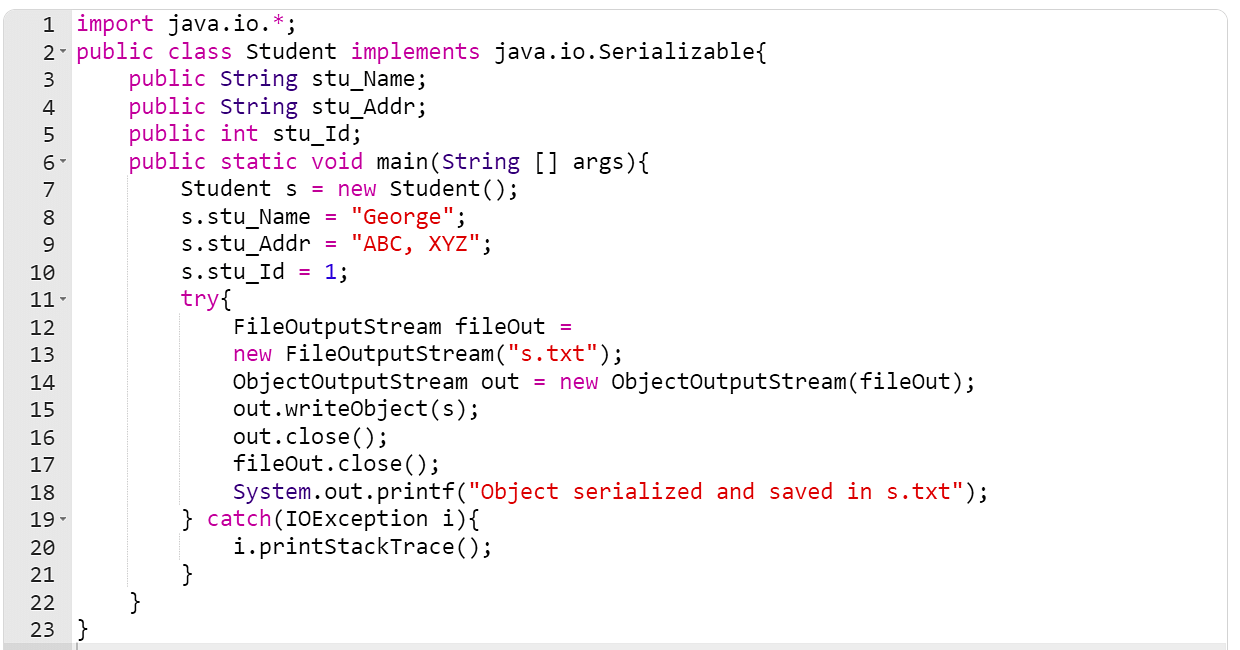

Instance for Deserialization in Java
Within the code beneath, you are going to have a look at learn how to deserialize the scholar object that was once have serialized within the above instance.
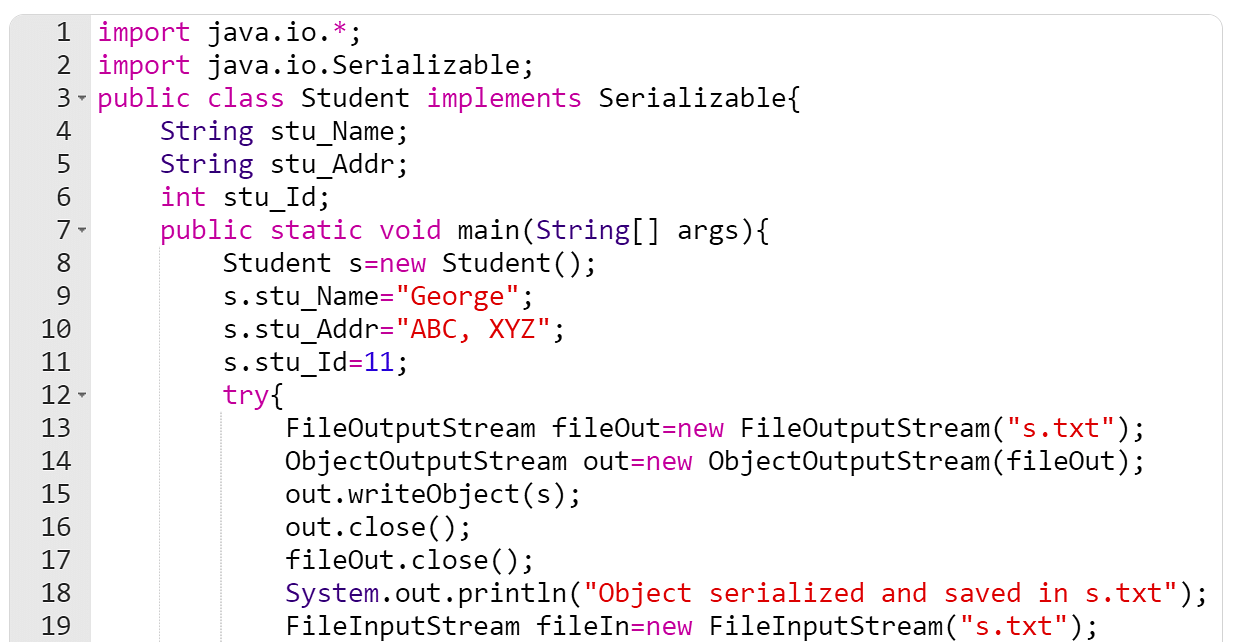
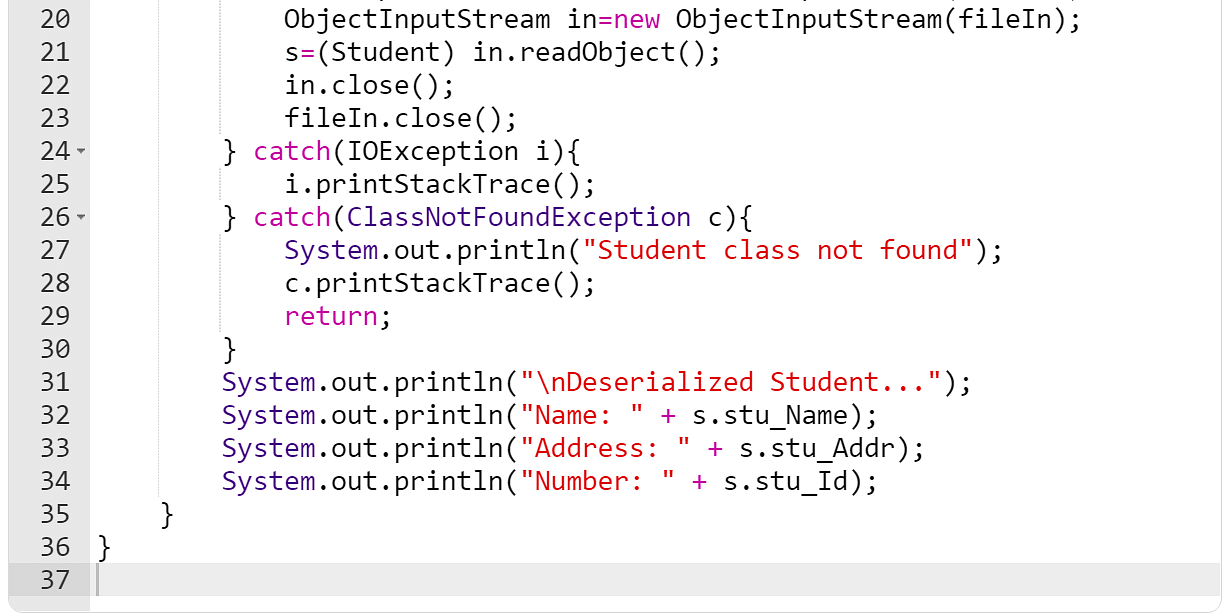

Serialization in Java With Inheritance (Is-A Courting)
As discussed within the issues to notice segment, when a mother or father elegance implements the Serializable interface, the kid categories should not have to take action. Let’s have a look at that time in motion with this Java serialization instance in inheritance.
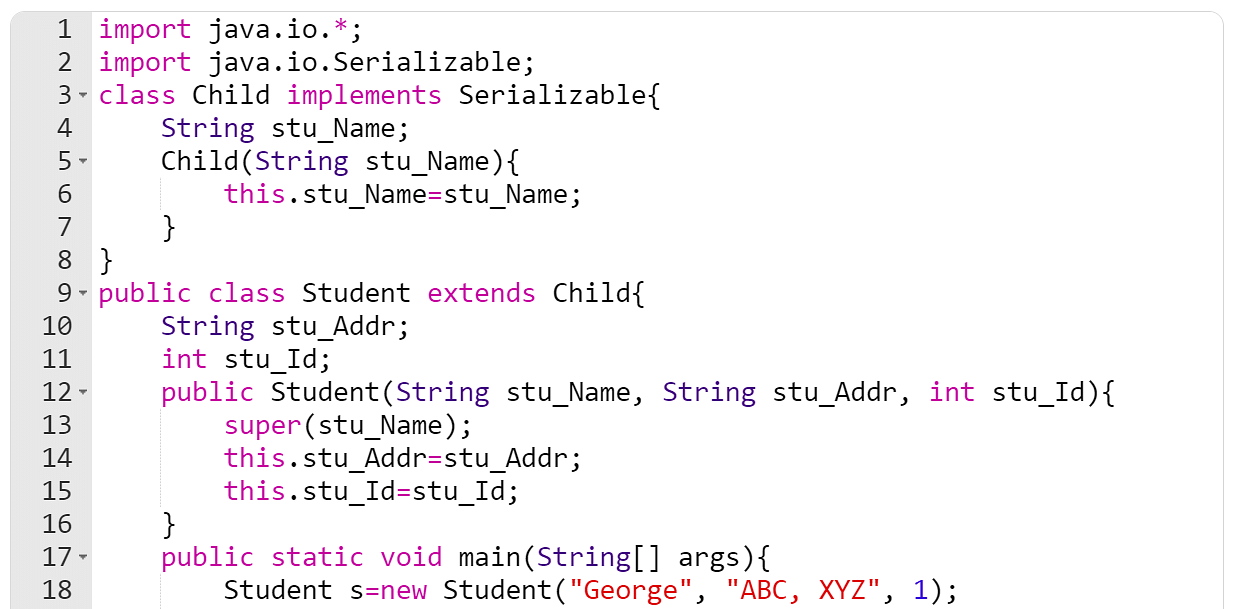
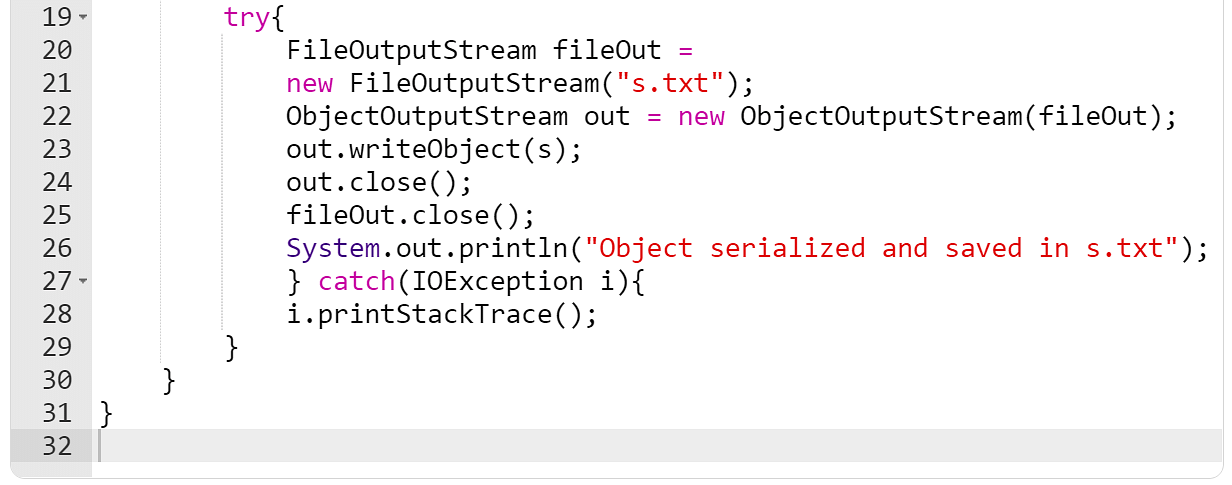

Serialization in Java With Aggregation (Has-A Courting)
Within the beneath code, the Pupil object may not be serialized because the Deal with elegance does no longer enforce the Serializable interface, and it has attempted to make use of the reference from the Deal with elegance to serialize the Pupil elegance. Which means if you wish to serialize an object with regards to some other elegance, the entire references should be serializable, or else it is going to throw NotSerializableException.
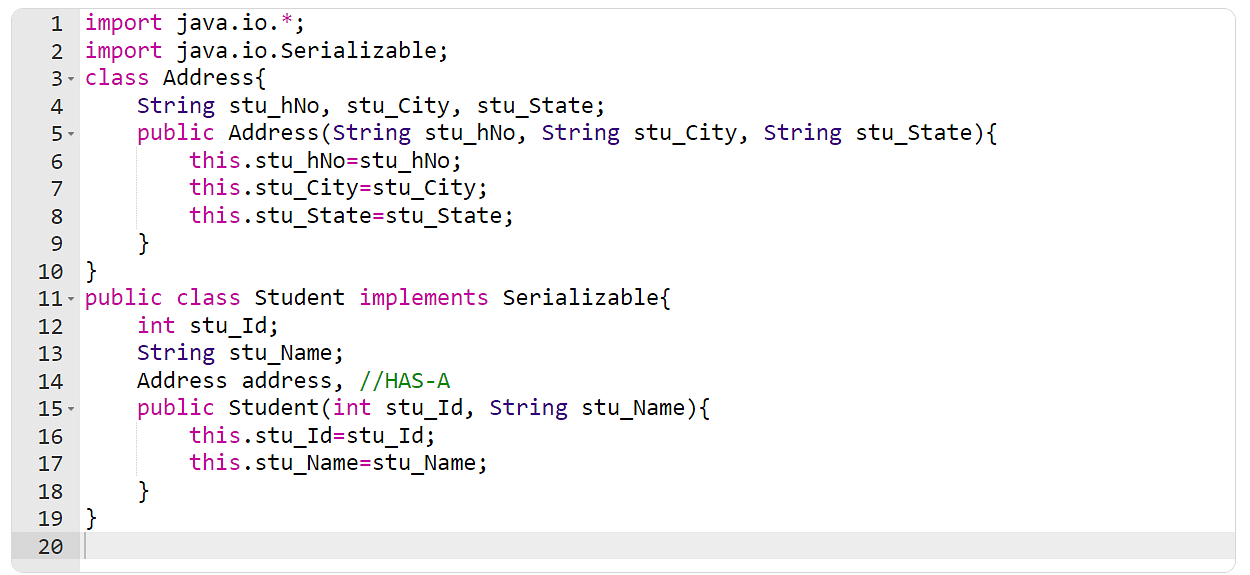
Serialization in Java with Static Knowledge Member
Serialization ignores the static knowledge individuals in Java. Within the instance beneath, you are going to use a static knowledge member and serialize the item. However for the reason that serialization will haven’t any have an effect on at the static knowledge, its price could be changeable ahead of de-serializing it.
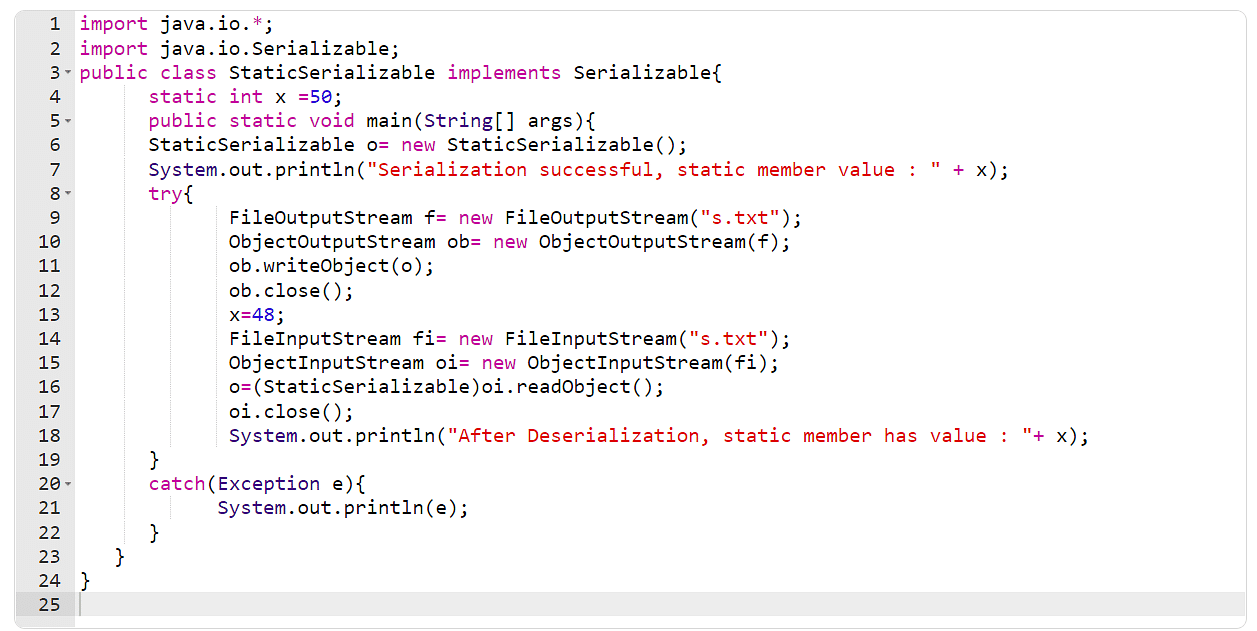

What’s the Temporary Key phrase?
The temporary is a reserved key phrase in Java. Should you don’t need any knowledge member to get serialized, you need to upload the temporary key phrase. Within the beneath program code, you are going to use the temporary key phrase to 2 knowledge individuals and show the entire knowledge individuals’ values.
As you’ll see, the temporary knowledge individuals go back the default price, which is 0 for integers and null for strings.
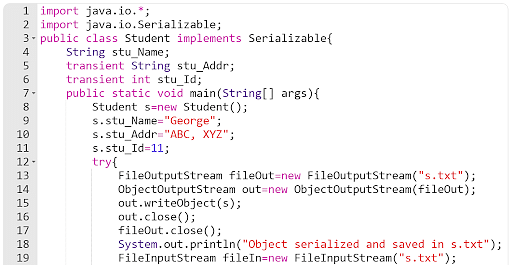
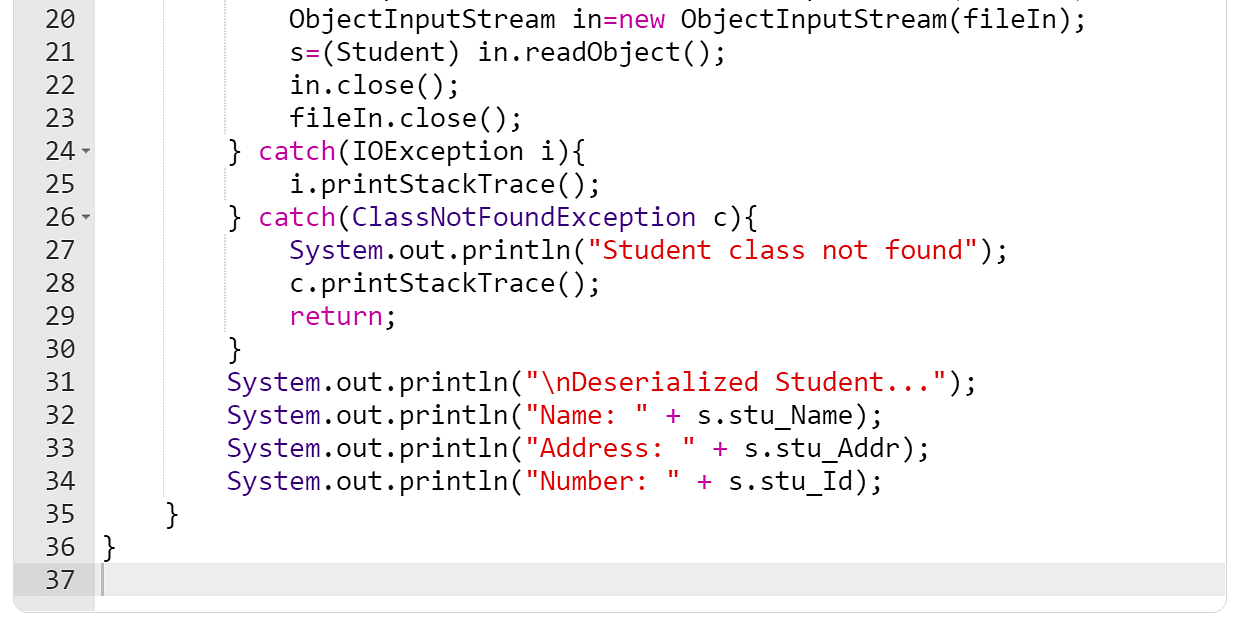

Get a company basis in Java, essentially the most usually used programming language in instrument construction with the Java Certification Coaching Direction.
Conclusion
On this article, you discovered the whole thing about serialization in Java. If you wish to be told extra complicated ideas, you’ll go for Simplilearn’s Java Certification Coaching. The direction will assist you to snatch a number of Java programming ideas and practice them to Hibernate, Spring, and different frameworks.
Have any questions for us referring to Serialization in Java? Depart them within the feedback segment of this newsletter, and our professionals gets again to you ASAP.
Glad studying!
supply: www.simplilearn.com












